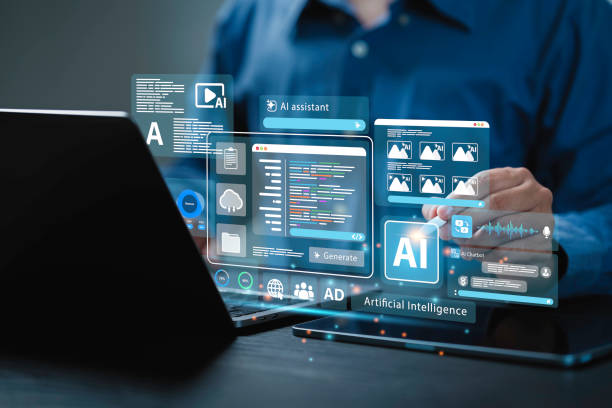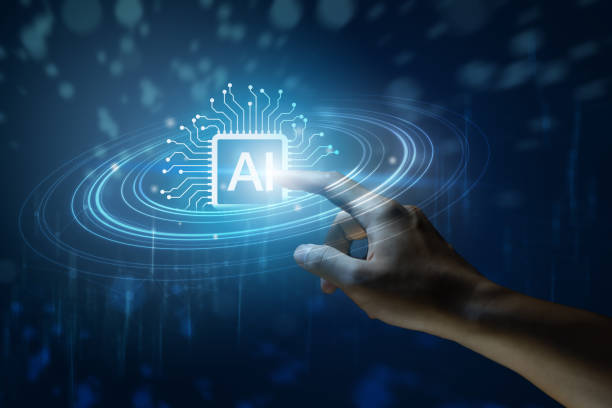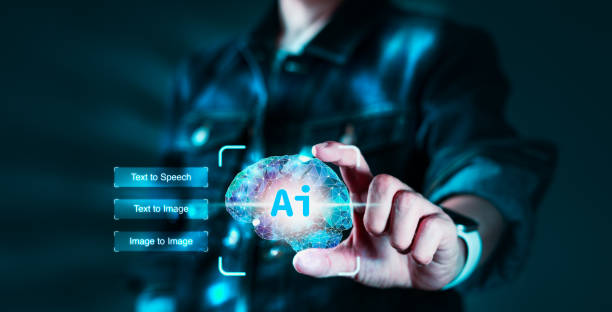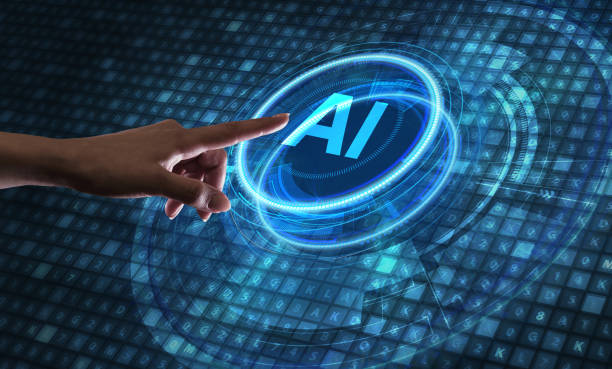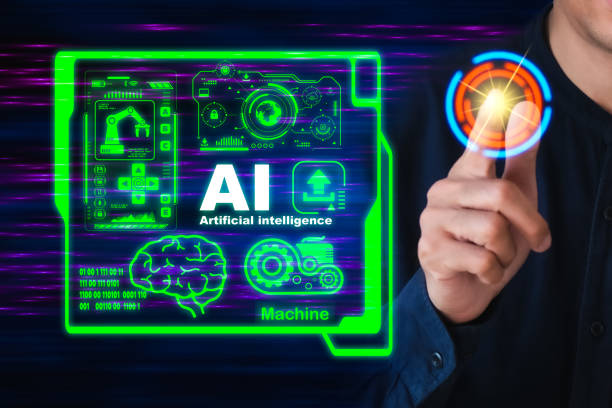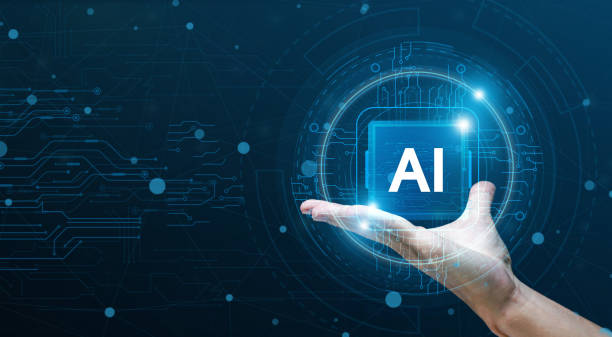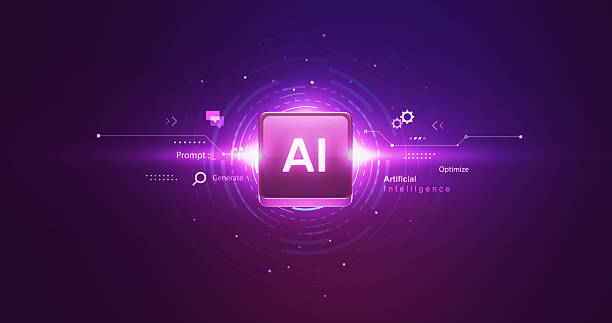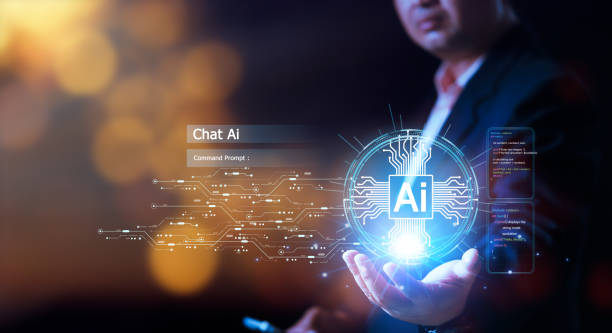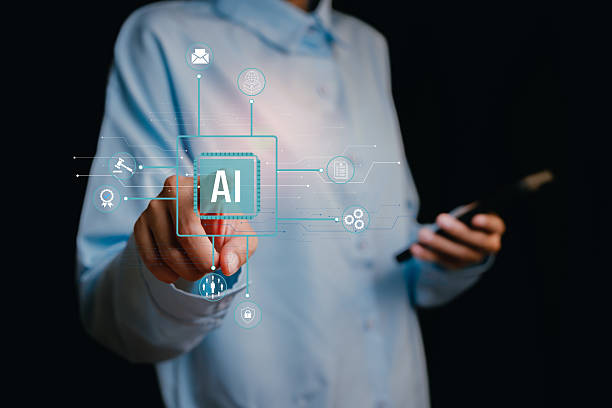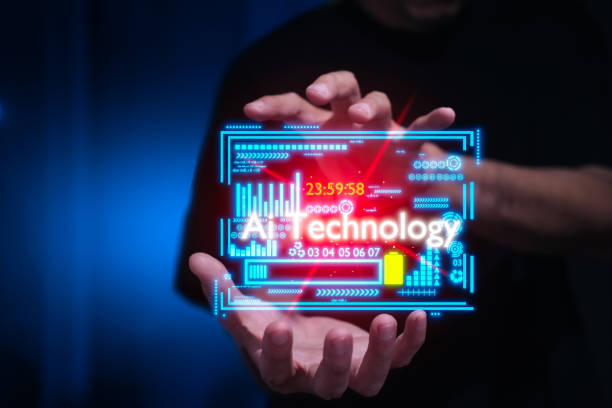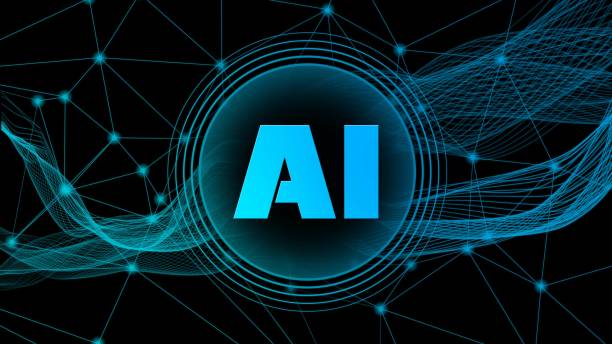What is an Artificial Intelligence Robot? Comprehensive Definition and Types Introduction
What is an Artificial Intelligence Robot? Comprehensive Definition and Types Introduction
Artificial intelligence (AI) is rapidly advancing, and AI robots play an important role in this field.
But what exactly is an AI robot? Simply put, an AI robot is a type of robot that uses algorithms and AI techniques to perform tasks that typically require human intelligence.
These tasks can include learning, reasoning, problem-solving, natural language understanding, and pattern recognition.
Using these capabilities, an AI robot can operate independently or semi-independently and interact with its environment.
There are different types of AI robots, each designed for specific applications.
Some of these robots are physical and operate in the real world, such as industrial robots or home robots.
Others are software-based and operate in the digital world, such as chatbots or virtual assistants.
Industrial robots, including AI robots, can perform repetitive and dangerous tasks with high accuracy and speed, while chatbots can answer user questions and provide support services.
Generally, an AI robot is referred to as a robot equipped with some form of artificial intelligence and capable of performing assigned tasks intelligently.
This intelligence can be achieved through machine learning algorithms, deep neural networks, or other AI methods.
Therefore, an AI robot is a powerful tool with high potential for transformation in various industries.
Does your company’s website create a professional and lasting first impression on potential customers? Rasaweb, with professional corporate website design, not only represents the credibility of your brand but also paves the way for the growth of your business.
✅ Creating a powerful and reliable brand image
✅ Attracting target customers and increasing sales
⚡ Get free consultation
Difference Between AI Robots and Traditional Robots
Click here to preview your posts with PRO themes ››
Difference Between AI Robots and Traditional Robots
Understanding the difference between AI robots and traditional robots is essential for better understanding their functions and applications.
Traditional robots typically operate based on pre-programmed schedules.
These robots follow specific commands and are not capable of learning or adapting to new conditions.
For example, a simple industrial robot designed for welding parts can only operate according to the program defined for it.
In contrast, AI robots have much more capabilities.
These robots can learn from data, recognize patterns, and make decisions based on these patterns.
AI robots are equipped with sensors that collect information from the surrounding environment and use this information to improve their performance.
For example, an AI robot designed for autonomous driving can identify its surroundings using sensors and machine learning algorithms and adjust its route based on traffic conditions.
In summary, the main difference between AI robots and traditional robots is their ability to learn and adapt.
Traditional robots can only perform tasks that are programmed for them, while AI robots can improve their performance and perform more complex tasks by learning from data and experience.
As a result, AI robots have much more potential for automating tasks and improving efficiency in various industries.
Amazing Applications of AI Robots in Various Industries
Amazing Applications of AI Robots in Various Industries
AI robots are creating dramatic changes in various industries.
These robots can perform tasks that were previously impossible or very difficult.
In the manufacturing industry, AI robots can optimize production lines, improve product quality, and reduce costs.
These robots can use machine vision to identify product defects and prevent defective products from entering the market.
Also, AI robots can perform repetitive and tedious tasks, allowing human employees to focus on more creative and strategic tasks.
Click here to preview your posts with PRO themes ››
In healthcare, AI robots can assist doctors in diagnosing diseases, performing complex surgeries, and providing personalized care.
These robots can identify patterns by analyzing medical data that may be hidden from the eyes of doctors.
Also, AI robots can assist surgeons in performing precise and minimally invasive surgeries and reduce the likelihood of complications.
One of the important applications of AI robots in this area is providing remote healthcare services to patients living in remote areas.
In the service industry, AI robots can help customers find information, solve problems, and conduct transactions.
Chatbots and virtual assistants can answer customer questions, place orders, and resolve technical issues.
These robots can be available 24 hours a day, 7 days a week, and provide services to customers anytime, anywhere.
| Industry | Application of AI Robot |
|---|---|
| Manufacturing | Optimization of production lines, quality control, automation of tasks |
| Healthcare | Diagnosis of diseases, robotic surgery, provision of remote healthcare services |
| Services | Customer support, answering questions, placing orders |
Advantages and Disadvantages of Using AI Robots
Advantages and Disadvantages of Using AI Robots
The use of AI robots has many advantages, including increased productivity, reduced costs, improved quality, and increased safety.
AI robots can perform tasks faster and more accurately than humans and reduce the likelihood of errors.
Also, these robots can operate in dangerous and unsuitable environments for humans and prevent workers from being injured.
However, the use of AI robots also has disadvantages.
One of the most important disadvantages is the high cost of deployment and maintenance of these robots.
AI robots require significant investment in hardware, software, and training.
In addition, the use of AI robots can lead to job losses.
With the automation of tasks, many human jobs may become obsolete, and human workers need to be retrained to learn new skills.
Also, there are concerns about the security and privacy of data.
AI robots can collect and process large amounts of data, and this data may be misused.
For example, AI robots, if used improperly, can be used for malicious purposes such as spying or manipulating information.
Finally, it is necessary to carefully evaluate the advantages and disadvantages of using AI robots and make informed decisions about the use of this technology.
Creating appropriate policies and regulations can help reduce risks and increase the benefits of using AI robots.
Responsible and ethical development of AI robots is also essential to ensure that this technology is used for the benefit of human society.
Do you dream of a thriving online store but don’t know where to start?
Rasaweb is your comprehensive solution for designing an online store website.
✅ Attractive and user-friendly design
✅ Increased sales and revenue⚡ Get free consultation
Challenges Facing the Development and Deployment of AI Robots
Challenges Facing the Development and Deployment of AI Robots
The development and deployment of AI robots face numerous challenges.
One of the most important challenges is the lack of sufficient and high-quality training data.
AI robots need a large amount of data to learn and improve their performance.
Collecting and preparing this data can be time-consuming and costly.
In addition, the training data must be accurate and error-free to prevent the robot from learning incorrect patterns.
Therefore, one of the basic challenges of AI robots is ensuring the quality of training data.
Another challenge is the shortage of skilled experts and engineers in the field of artificial intelligence.
The development and deployment of AI robots require high expertise and technical knowledge.
The shortage of experts can slow down the development and deployment of this technology.
Universities and educational institutions must strive to increase the number of AI experts and provide the necessary training in this field.
Also, attracting and retaining skilled experts in this field is of great importance.
Ethical and legal issues are also among the challenges facing the development and deployment of AI robots.
The use of AI robots can raise questions about responsibility, accountability, and privacy.
It is necessary to develop appropriate regulations and standards for the use of AI robots to prevent the misuse of this technology.
Also, issues related to bias and discrimination in AI algorithms must be addressed to prevent the creation of social inequalities.
What will be the future of AI robots?
What will be the future of AI robots?
The future of AI robots is very bright and full of potential.
Rapid advances in artificial intelligence, machine learning, and robotics make it possible to create robots that are capable of performing more complex and intelligent tasks.
In the future, AI robots are expected to play a more important role in our daily lives.
These robots can be present in homes, workplaces, hospitals, schools, and other environments and help us perform various tasks.
One of the important trends in the future of AI robots is the development of collaborative robots (Cobots).
These robots are designed to cooperate with humans and can help humans perform joint tasks.
Collaborative robots are safer and more flexible than traditional industrial robots and can be used in various work environments.
Also, AI robots are expected to be able to learn faster and adapt to new conditions in the future.
These robots can improve their performance and quickly learn new tasks using reinforcement learning and unsupervised learning techniques.
Finally, the future of AI robots depends on the amount of investment in research and development, the development of a skilled workforce, and the creation of appropriate policies and regulations.
With proper investment, the high potential of this technology can be used to improve human life and solve global problems.
In the coming years, AI robots will make great progress in all industries.
How to Build an AI Robot? A Step-by-Step Guide
How to Build an AI Robot? A Step-by-Step Guide
Building an AI robot can be a challenging but very rewarding project.
This project requires knowledge and skills in various fields, including robotics, programming, and artificial intelligence.
The first step in building an AI robot is to define the goal and determine the tasks of the robot.
You need to specify what your robot will do and what problems it will solve.
For example, do you want to build a home robot that helps you with daily tasks, or an industrial robot that performs repetitive tasks in a factory?
The next step is to choose the right hardware.
You need a robotics platform, sensors, motors, controllers, and a computer for data processing.
Choosing the right hardware depends on the goal and tasks of the robot.
For example, if you want to build a mobile robot, you need to choose a robotic platform with wheels or legs.
Also, you need to choose sensors that allow your robot to understand its surroundings.
Common sensors include cameras, lidar, ultrasonic sensors, and infrared sensors.
After selecting the hardware, you need to develop the required software and AI algorithms.
This includes programming the robot, training machine learning models, and creating a user interface.
You can use programming languages such as Python, C++, and Java to program your robot.
Also, you can use AI libraries and frameworks such as TensorFlow, PyTorch, and scikit-learn to train machine learning models.
In general, building an AI robot requires a comprehensive plan and sufficient knowledge.
Introducing the Best AI Robot Development Tools and Platforms
Introducing the Best AI Robot Development Tools and Platforms
Developing AI robots requires appropriate tools and platforms.
These tools and platforms can speed up the development process and improve code quality.
One of the most popular AI robot development platforms is ROS (Robot Operating System).
ROS is a flexible software framework that provides various tools and libraries for developing robots.
ROS supports various programming languages and allows for the creation of complex and distributed applications.
Also, ROS has a large community of developers who can help you solve problems and learn new concepts.
Another tool that is very useful in AI robot development is OpenCV (Open Source Computer Vision Library).
OpenCV is an open-source machine vision library that provides various algorithms and functions for processing images and videos.
OpenCV can be used for object detection, motion tracking, face recognition, and other machine vision tasks.
This library supports various programming languages and is widely used in robotics and artificial intelligence projects.
In addition, cloud platforms such as Amazon Web Services (AWS), Google Cloud Platform (GCP), and Microsoft Azure also provide powerful tools for developing AI robots.
These platforms offer various services including data storage, cloud processing, machine learning, and application deployment.
Using cloud platforms can reduce development costs and increase the scalability of applications.
Choosing the right tools and platforms depends on the needs and goals of your project.
| Tool/Platform | Description |
|---|---|
| ROS (Robot Operating System) | Software framework for developing robots |
| OpenCV (Open Source Computer Vision Library) | Open-source machine vision library |
| Amazon Web Services (AWS) | Cloud platform for developing and deploying applications |
| Google Cloud Platform (GCP) | Cloud platform for developing and deploying applications |
| Microsoft Azure | Cloud platform for developing and deploying applications |
Are you worried about the low conversion rate of your online store website and not getting the sales you want?
Rasaweb is your specialized solution for having a successful online store website.
✅ Significant increase in conversion rate and sales
✅ Professional and user-friendly design to satisfy customers
⚡ Are you ready for a transformation in online sales? Get a free consultation!
The Impact of AI Robots on the Labor Market and Society
The Impact of AI Robots on the Labor Market and Society
AI robots will have a profound impact on the labor market and society.
Automation of tasks by AI robots can lead to job losses in some industries.
Repetitive and routine tasks that were previously performed by humans can now be performed by robots faster and more accurately.
This can lead to increased unemployment and economic inequality.
However, AI robots can also create new job opportunities.
The development, deployment, and maintenance of AI robots require skilled professionals in various fields including robotics, programming, and artificial intelligence.
This can lead to an increased demand for technical skills and the creation of new jobs in these fields.
In addition, AI robots can increase productivity and efficiency in various industries.
By automating tasks, companies can reduce costs, improve product quality, and increase innovation.
This can lead to economic growth and increased social welfare.
Also, AI robots can play an important role in solving social problems such as climate change, resource scarcity, and pandemic diseases.
These robots can help solve these problems by collecting and analyzing data, providing innovative solutions, and implementing complex projects.
In general, the impacts of AI robots on the labor market and society are complex and multifaceted.
To reduce the negative effects and increase the positive effects of this technology, it is necessary to develop appropriate policies and programs.
These policies should focus on training the workforce, creating new jobs, supporting vulnerable people, and promoting the responsible and ethical use of AI robots.
It is very important that the development of AI robots is for the collective benefit.
Important Tips for Buying and Using AI Robots
Important Tips for Buying and Using AI Robots
Buying and using AI robots requires careful consideration and awareness of important tips.
Before buying an AI robot, you need to carefully specify your needs and goals.
You need to know what your robot will do and what problems it will solve.
Also, you need to determine your budget and choose robots that are compatible with your budget.
Examining the technical specifications of the robot, including processing capabilities, sensors, motors, and batteries, is also very important.
You need to make sure that the robot you choose is capable of performing the desired tasks and has a reasonable lifespan.
After purchasing the robot, you need to learn the necessary training for its proper use.
Improper use of the robot can lead to damage to the robot, accidents, and data loss.
Also, you need to maintain and repair the robot regularly.
Regular maintenance can increase the lifespan of the robot and prevent serious problems.
Checking the robot’s software and AI algorithms and updating them is also very important.
Older algorithms may be less efficient and vulnerable.
Finally, you need to pay attention to the security and privacy of the robot.
AI robots can collect and process large amounts of data, and this data may be misused.
You need to ensure data encryption, the use of strong passwords, and limited access to the robot.
Also, you need to carefully review the robot’s privacy policies and be aware of your rights regarding the collection and use of data.
By following these tips, you can use AI robots safely and effectively and benefit from their advantages.
Frequently Asked Questions
| Question | Answer |
|---|---|
| What is an AI Robot? | An AI Robot is a machine capable of understanding the environment, reasoning, learning, and making decisions to perform tasks independently. |
| What is the difference between regular robots and AI robots? | Regular robots perform repetitive tasks based on pre-programming, while AI robots can learn from experience, interact dynamically with the environment, and even behave in a way that resembles human intelligence. |
| What are the main applications of AI robots? | They are used in industries (manufacturing, assembly), medicine (surgery, diagnostics), services (customer support, home), exploration (space, underwater) and many other fields. |
| What technologies are used in building AI robots? | Machine Learning, Computer Vision, Natural Language Processing, Deep Learning, and Robotics are among the key technologies. |
| Can AI robots have emotions? | Currently, robots do not have emotions in the human sense. They can identify and react to emotions, but they do not experience emotions themselves. |
| What are the main challenges in developing AI robots? | Safety, reliability, ethics, autonomy, compatibility with complex environments, and natural interaction with humans are important challenges. |
| How do AI robots learn? | They are usually trained using a large amount of data, machine learning algorithms, and deep learning to identify patterns and make decisions. |
| Examples of AI robots in everyday life? | Smart robotic vacuum cleaners, customer support chat robots, self-driving cars, and surgical robots in hospitals. |
| Are AI robots a threat to human jobs? | Some repetitive jobs may be automated, but at the same time, robots can increase productivity and create new jobs in the development, maintenance, and monitoring of these systems. |
| How is the future of AI robots predicted? | They are expected to become smarter, more autonomous, and capable of performing more complex tasks, and to interact more closely with humans in various environments. |
And other services of Rasa Web Advertising Agency in the field of advertising
Smart content strategy: Transform website traffic with the help of marketing automation.
Smart SEO: Professional optimization for campaign management using intelligent data analysis.
Smart reportage: A new service to increase website traffic by optimizing key pages.
Smart advertising campaign: Professional optimization to increase website traffic using user experience customization.
Smart data analysis: A new service to improve SEO ranking by designing an attractive user interface.
And more than hundreds of other services in the field of internet advertising, advertising consulting, and organizational solutions
Internet Advertising | Advertising Strategy | Advertorial
Resources
How to Build an AI Robot? – Zoomit
,Applications of Smart Robots in Everyday Life – Virgool
,What is a Smart Robot (AI)? – Aparat
,Introductory Training for Building Chatbots with Python – Faradars
? For a leap in your business in the digital world, Rasaweb Afarin, a specialist in WordPress website design and comprehensive digital marketing solutions, is your smart companion.
📍 Tehran, Mirdamad Street, next to the Central Bank, South Kazeroun Alley, Ramin Alley, No. 6

